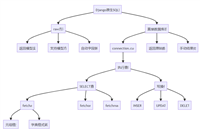在 postgresql 中,判断字段是否为null或是否为空字符串有以下几种方法:
1. 判断字段是否为 null
-- 使用 is null select * from table_name where column_name is null; -- 使用 is not null select * from table_name where column_name is not null;
2. 判断字段是否为空字符串
-- 等于空字符串 select * from table_name where column_name = ''; -- 不等于空字符串 select * from table_name where column_name != '';
3. 同时判断 null 和空字符串
方法一:使用 or 条件
-- 判断为 null 或空字符串 select * from table_name where column_name is null or column_name = ''; -- 判断不为 null 且不为空字符串 select * from table_name where column_name is not null and column_name != '';
方法二:使用 coalesce 函数
-- 判断为 null 或空字符串 select * from table_name where coalesce(column_name, '') = ''; -- 判断不为 null 且不为空字符串 select * from table_name where coalesce(column_name, '') != '';
方法三:使用 nullif 函数
-- 判断为 null 或空字符串 select * from table_name where nullif(column_name, '') is null; -- 判断不为 null 且不为空字符串 select * from table_name where nullif(column_name, '') is not null;
4. 实际应用示例
-- 创建示例表
create table users (
id serial primary key,
name varchar(100),
email varchar(100)
);
-- 插入测试数据
insert into users (name, email) values
('张三', 'zhangsan@example.com'),
('', 'lisi@example.com'),
(null, 'wangwu@example.com'),
('赵六', '');
-- 查询 name 字段为 null 或空字符串的记录
select * from users
where name is null or name = '';
-- 查询 email 字段不为 null 且不为空字符串的记录
select * from users
where email is not null and email != '';
-- 使用 coalesce 查询有效名称
select * from users
where coalesce(name, '') != '';5. 处理空格字符串
如果需要同时排除只包含空格的字符串,可以使用:
-- 排除 null、空字符串和只包含空格的字符串 select * from table_name where coalesce(trim(column_name), '') != ''; -- 或者使用正则表达式 select * from table_name where column_name is null or column_name ~ '^[[:space:]]*$';
总结
- is null / is not null:判断 null 值
- = '' / != '':判断空字符串
- coalesce(column, ''):将 null 转换为空字符串后再判断
- nullif(column, ''):将空字符串转换为 null 后再判断
根据具体需求选择合适的方法,coalesce 方法通常比较简洁易懂。
以上就是postgresql判断字段是否为null或是否为空字符串的几种方法的详细内容,更多关于postgresql判断字段是否为null的资料请关注代码网其它相关文章!





发表评论